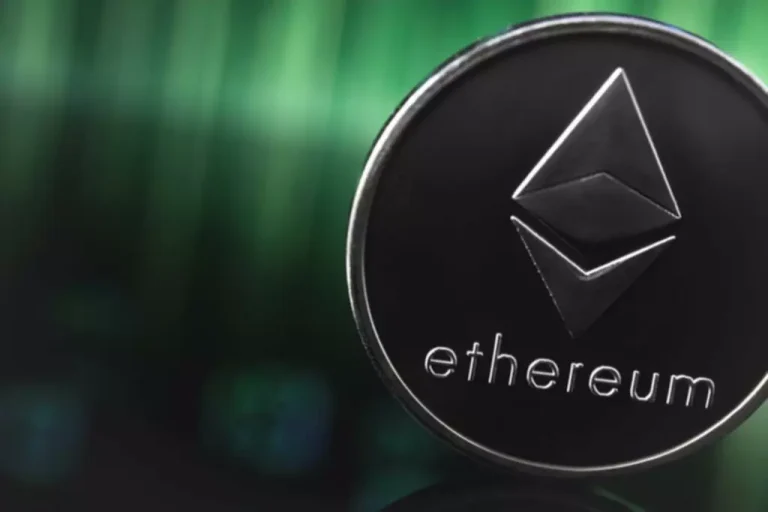While yield farming might call for some strategic maneuvering to maneuver and reap more earnings, staking is a more intuitive concept. Staking cryptocurrency may not be as highly gratifying as YF, but it’s more secure. Choosing between yield farming and staking could also be determined by your level of sophistication and what is finest for your https://www.xcritical.com/ complete portfolio. Deciding between yield farming and staking as a type of investment may be tough. While each present the potential for additional earnings, it’s essential to know which is correct in your circumstances and targets.

Another benefit of yield farming is the chance to diversify your cryptocurrency portfolio. By offering liquidity to completely different DeFi protocols, yield farmers can spread their danger and keep away from having all their assets in one place. Yield farming also allows customers to earn rewards in various cryptocurrencies, which further diversifies their portfolio. It is price noting that diversification doesn’t necessarily assure profits or safety against losses, however it could help reduce dangers. Liquidity swimming pools are swimming pools of cryptocurrency belongings which may be locked in good contracts and used to facilitate transactions on DeFi platforms.
Yield farming can be considerably more confusing for beginner investors and should demand regular research and extra work. Staking offers lower advantages, but funds could be held for prolonged periods, and it doesn’t necessitate constant attention. So, it all boils right down to your experience with the DeFi space and the type of investor you need to be.
Variations Between Yield Farming And Staking
For instance, yield farmers who join a new project or strategy early on can revenue significantly. When it involves cryptocurrency, there are two core consensus mechanisms that stand out, and these are Proof of Work (PoW) and Proof of Stake (PoS). While PoW is at present essentially the most dominant protocol in the industry, PoS has also grown more and more popular. Whether yield farming or staking is the higher possibility really is determined by your perspective and your priorities as an investor, and whether or not or not those priorities are oriented round short- or long-term investing. DeFi is an rising monetary know-how that’s based mostly on secure distributed ledgers similar to these used by cryptocurrencies.
- SushiSwap is primarily identified for its DEX but has lately expanded to staking and yield farming solutions.
- A shift from Proof of Work (PoW) to a Proof of Stake (PoS) is in progress in the Ethereum 2.zero paradigm.
- Stakers arrange individual nodes for validating transactions and adding new blocks to the blockchain (or use nodes another person has set up).
- In comparing yield farming to staking, one of many disadvantages of staking is that it doesn’t supply much in comparability with yield farming.
Staking is the spine of the PoS (Proof of Stake) model, allowing individual buyers to contribute to the blockchain with their cryptocurrency by staking it by way of validators. Some of the dangers to liquidity mining include good contract risk, project risk, rug pull, and impermanent loss. Moreover, the chance issue is lower for staking in comparison with different avenues of passive funding like yield farming. The security of the staked tokens is equal to the protection of the protocol itself. In the crypto economic system, staking refers to pledging your crypto-assets as collateral for blockchain networks that use the PoS (Proof of Stake) consensus algorithm.
Why Do You Have Got To Opt For Liquidity Mining?
As you could already know, cryptocurrency costs may be volatile, and staking rewards are sometimes paid out in the identical foreign money. This implies that even if you are earning rewards, the value of your staked property might decrease due to fluctuations out there. It’s important to understand that staking is a long-term technique, and market volatility may be managed by way of diversification and danger management. Staking is the most complete amongst staking vs yield farming vs liquidity swimming pools. However, in contrast to yield farming and liquidity swimming pools, it consists of quite a few non-crypto definitions that may information you about your stake belongings in a crypto community. In the first stage of locking in the crypto assets, investors obtain the LP token as a bonus.
Thus, the upper stakes you hold, the bigger the staking rewards from the community. In staking, the rewards are distributed on-chain, meaning every time a block is validated, new tokens of that forex are minted and distributed as staking rewards. Staking is extra viable as a means of achieving consensus when in comparability with mining.
Level Of Risk (impermanent Loss)
Liquidity mining rewards are instantly proportional to the quantity of whole pool liquidity, which should not be underestimated. Newly issued tokens might doubtlessly provide entry to a project’s governance, as properly as the chance to change them for other cryptocurrencies or higher benefits. In return for the tokens they put within the liquidity pool, buyers would be rewarded by the protocol. The native governance tokens which would possibly be mined at the finish of each block are the rewards for liquidity mining. DeFi protocols, which give change and lending providers, are constructed on the inspiration of yield farmers. Because of this, decentralized exchanges are in a position to keep a stable supply of crypto assets (DEXs).
You can learn about yield farming and the other two strategies together so that you can establish any potential variations between them. It’s price noting that the primary goal of staking is to safeguard a blockchain network by improving its safety. The extra customers stake on a blockchain, the extra decentralized it is, and it’s harder to attack it.

Staking involves just one token that users can lock up in the staking pool, so stakers don’t need to purchase two tokens of equal or variable worth to offer liquidity. This might reduce the overall expense of participating in staking for sure tokens. When yield farmers swap between liquidity pools, they should pay transaction charges to execute those transfers. Users on the Ethereum network might have to pay excessive gasoline charges for a simple on-chain transaction.
Yield Farming Vs Staking: What Are The Similarities?
Simply put, staking is the process of holding a specific amount of cryptocurrency in a pockets or change account, after which using that steadiness to support the community. This can be accomplished in a number of different ways, relying on the particular What is Yield Farming cryptocurrency you’re staking. Similarly, funds are transferred between varied protocols to generate the very best possible yield. With liquidity mining, your return is instantly correlated to the level of danger you’re prepared to assume, so investing may be as dangerous or as safe as you need it to be.
Farming, staking, mining—it would possibly sound just like the worlds of farming and geology, however we’re truly referring to crypto. Decide what components are most important to you, whether or not that be safety or passivity, create a recreation plan and execute. If you want to sustain with the trends of the blockchain trade, be part of our communities on Discord, Reddit and Telegram.

Despite its complexity, staking has turn into increasingly well-liked due to its capacity to generate passive income with out trading or actively taking part in different markets. These techniques offer methods to earn passive earnings from your crypto investments with out the need for continuous trading. But it’s equally essential to note that there are safer, extra profitable alternatives to yield farming, staking, and liquidity mining, chief among them being a bespoke house corresponding to Trality’s Marketplace. Nevertheless, you will need to do not neglect that, despite the potential for a particularly excessive ROI, yield farmers need to be vigilant concerning the attainable dangers involved. While these techniques sound related there are some variations between yield farming and staking. Staking is most commonly used as a validating method for many cryptocurrencies is available almost all over the place.
Advantages And Disadvantages Of Liquidity Mining (yield Farming)
Staking is often a lot simpler to learn since customers simply want to select a staking pool in a Proof of Stake network to stake crypto. While these phrases are sometimes used interchangeably, there are a number of essential variations. Let’s outline each term and break down the variations between staking, yield farming, and liquidity mining. Profit farming aims to generate the very best possible earnings, while staking aims to help the blockchain community stay secure.

Despite these dangers concerned, many crypto traders are drawn to the potential for steady returns provided by liquidity mining in the DeFi area. The first thing you want to do is to begin doing your thorough analysis (DYOR). Overall each staking and yield farming are an effective way to generate passive income when investing in cryptocurrencies. We have a devoted staking dashboard for our users where you’ll be able to track your earnings by the day. Your rewards are generated and may be withdrawn or restaked to extend your collateral for increased potential future returns. Tokens with a low buying and selling volume incessantly acquire probably the most from yield farming as a result of it’s the only sensible approach to trade them.

These tokens may be borrowed for margin trading by customers of the lending platform. Contributors of tokens in liquidity pools and validator nodes are the lifeblood of DeFi protocols and Proof-of-Stake consensus methods. Taking this into consideration, the rewards earned in this course of aren’t utterly free. But before collaborating in any of these, it’s important that investors contemplate each options (yield farming and staking) because it applies to them and issues profitability and adaptability as nicely.
When comparing yield farming vs staking, the winning tactic is apparent to buyers in search of liquidity. Both of those ways require a crypto investor to own a certain quantity of crypto belongings to have the ability to be worthwhile. To stake cryptos, users should obtain and synchronize wallets and transfer cash. Users can arrange their wallet’s staking settings, check statistics on the staked coin, and keep a watch on blockchains for rewards. Make positive all community security settings are up-to-date with the best levels of protection enabled so as to not put staking funds in danger.